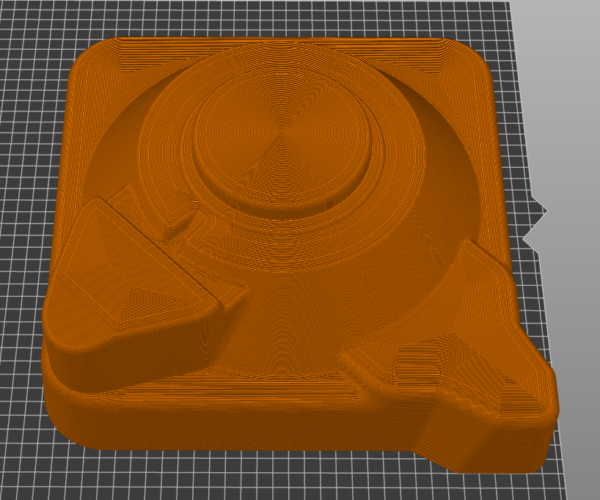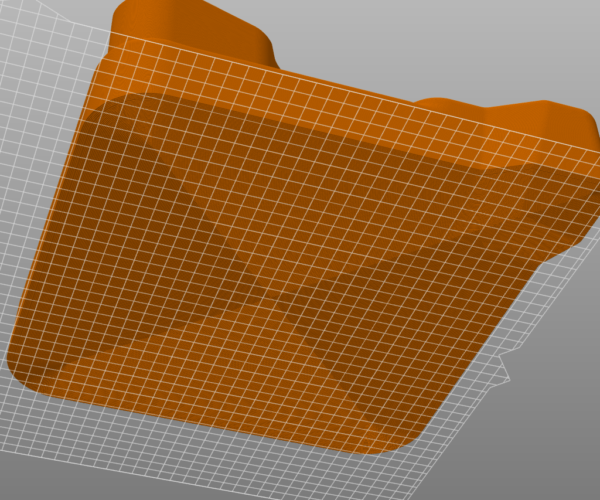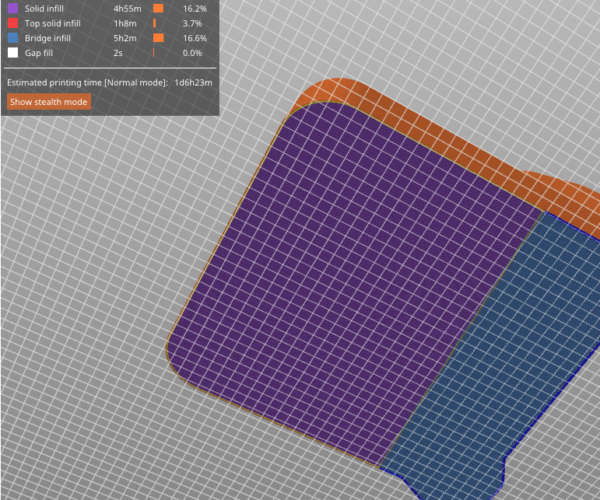Part sliced with PrusaSlicer 2.3.3 showing overhang and top layer differences from Simplify3D
I've been having a heck of a time printing this part on our 3DPlatform 1000; it seems to run into problems every time about 1/8" up (possibly where Prusa shows a partial overhang on the bottom?) when sliced with Simplify. I want to try printing the Prusa version, but it looks like there might be a problem with the model that Prusa sees but Simplify doesn't?
Sliced with Simplify3D:
Sliced with Prusa 2.3.3:
Any ideas? Bug, or feature?
-Bill
Your part needs placing flat to the bed. You view from below makes this obvious. Use the place to bed tool from the left hand tool bar. I’m not at my pc at the moment but this is basic tools so if you can’t find it look for the Prusa slicer knowledge base. A google search will find it and it will explain all the basic functions and some of the more advanced ones too.
That's as flat as it gets...
Thanks, but that's the first thing I do when I import the part; place surface on bed, and choose the surface you see facing down in the image. I've been doing this for a while, but there's always something new to learn, and I'm only starting to use the Prusa slicer.
The slicer seems to think that only part of it is touching the bed. If I tell it to "force support" on layers 1 and 2, it not only shows the part flat all the way across, but the artifacts on the top layers vanish as well. The engineer has since modified the file to remove a chamfer that was in the area that appeared to be "floating" and now both Prusa slicer and Simplify3D produce similar slicing results.
Please save your Prusa slicer project, file>save project as. This will save a .3mf file. Take that 3mf and zip it up. Zip file please, not one of the other varieties to keep things simple and attach the zip file to a post here. Must be zipped for the forum to accept the file.
A 3mf project file contains a snapshot of all yo8r settings as well as the models. That way we can see and slice exactly what you are using. There is possibly something wrong with the model like a stray vertices. With the file we can check multiple things much more easily.
There have been instances of PS having problems with certain models.
Project file is attached.
It looks like once the engineer tweaked the model a bit, the problem went away, so it's not really a problem for us any more, but in case you want to try to figure out if it's a bug or a feature, I've included the file per your request. I'll be interested to see what you decide. It may just be one of those things that renders fine but is physically impossible to print with the way it was originally constructed. Thanks for your help.bill-inside2
Cheers. I guess it’s the test engineer side of me 🙂 Besides it’s often useful to know as it can help to avoid it in future. I’ll download and take a look when I get home.
Wow that model is ...... dense. nearly 4.5 million faces/tris. I think my computer needs more memory lol. I imported it into Blender. Unfortunately if I try and run any of the normal modelling debug I'd normally do it kind of locks my computer up for about half an hour.
That model you posted has 9 non manifold edges, 147 intersecting faces, 2349 Thin faces and 68 sharp edges. Of all those the non manifold edges are the killer for a slicer and sometimes the intersecting faces can cause problems but not often.
The intersecting faces are mainly underneath and on that side of the model that is lifted up. Looking at the vertices on the bottom they are all fractionally different z heights too. That combined with the shear number of faces/verts and I'm not surprised it was having trouble.
I made all the verts on the bottom the same z height and exported it and after that the bottom lays flat and slices the whole layer. Essentially if your designer has already fixed it then its academic but all it takes is one edge/corner on your model being out to several decimal places and it would do what it did when its converted to stl.
Sorry I cant do a more detailed breakdown but its really giving my poor pc conniptions.



